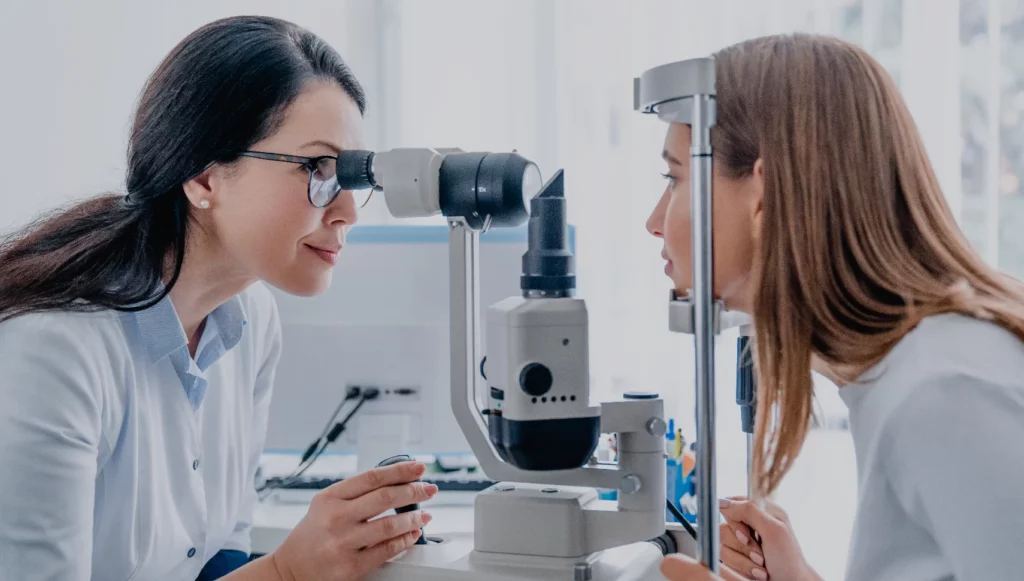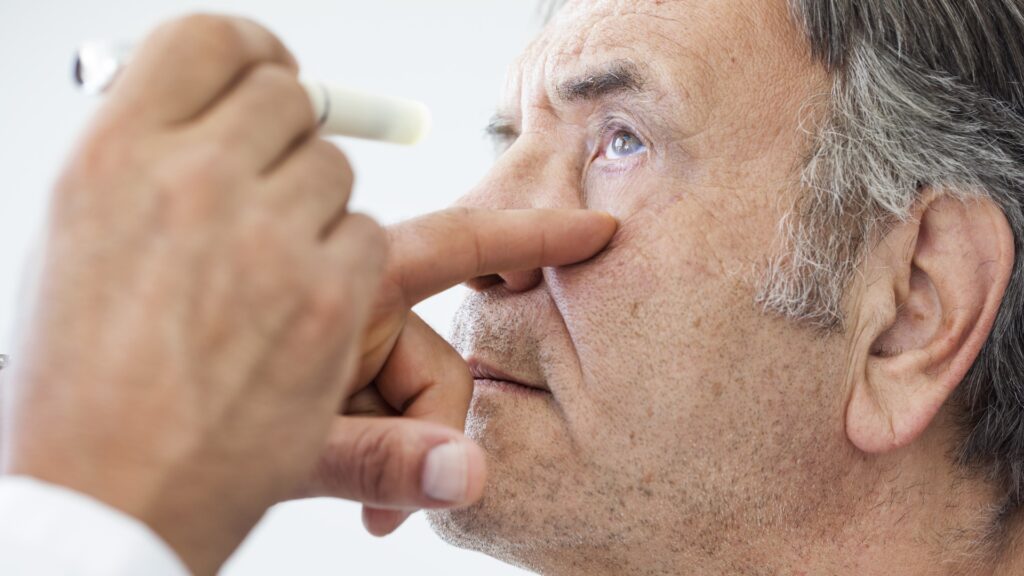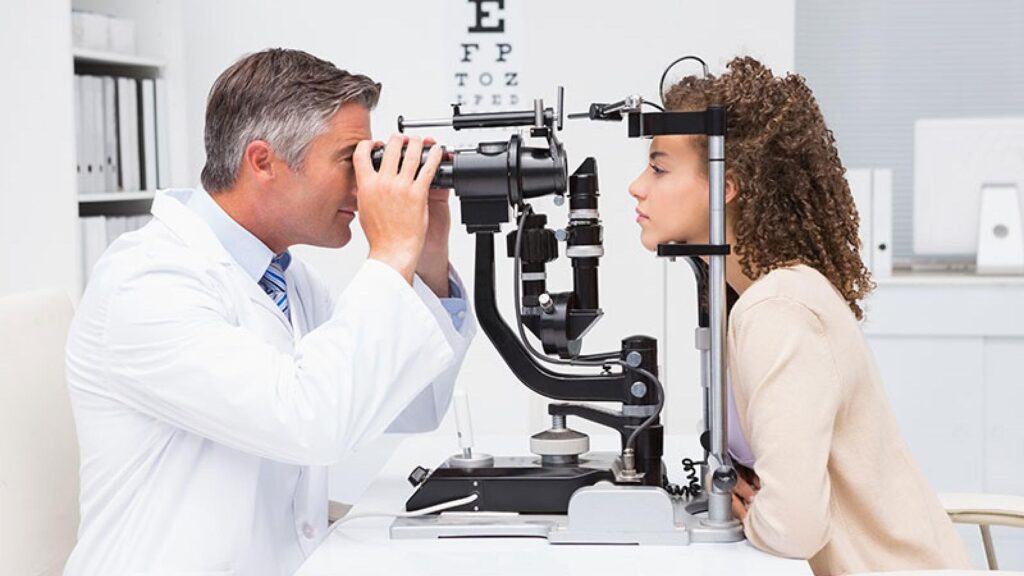Glaucoma is a serious eye condition that can lead to vision loss and even blindness if left untreated. Understanding the causes and symptoms of glaucoma is crucial for early detection and intervention. In this article, we will explore what glaucoma is, its causes, how to identify its symptoms, the risk factors associated with it, and the preventive measures and treatment options available.
Understanding Glaucoma
What is Glaucoma?
Glaucoma is a group of eye diseases that damage the optic nerve, which is responsible for transmitting visual information from the eye to the brain. This damage is typically caused by increased pressure inside the eye, known as intraocular pressure.
Glaucoma is a serious eye disease that necessitates vigilance and proactive eye care. By understanding the causes and symptoms glaucoma, recognizing the associated risk factors, and embracing preventive measures, you can take control of your eye health and reduce the risk of vision loss. Remember, early detection and intervention are key to preserving your sight and enjoying a life filled with visual experiences. Don’t wait – prioritize your eye health today!
Although intraocular pressure is one of the main risk factors for glaucoma, it isn’t the only one. Other factors, such as genetics and environmental triggers, can also contribute to the development of this condition.
Glaucoma is often referred to as the “silent thief of sight” because it can progress slowly and without noticeable symptoms until significant vision loss occurs. By the time symptoms become apparent, the damage is already done, making early detection and treatment crucial in preserving vision.
The Importance of Eye Health
Before diving into the causes and symptoms of glaucoma, it’s crucial to understand the significance of maintaining good eye health. Our eyes play a vital role in our ability to navigate the world around us and enjoy the wonders of life. Regular eye examinations and proper care are essential for early detection and prevention of various eye conditions, including glaucoma.
Eye health is not only about vision clarity but also about overall well-being. The eyes are intricate organs that provide valuable insights into our general health. Conditions such as diabetes and high blood pressure can often be detected through an eye exam, highlighting the interconnectedness of eye health with systemic health.

The Causes of Glaucoma
Genetic Factors in Glaucoma
Research has shown that certain genetic factors can increase the likelihood of developing glaucoma. If you have a family history of glaucoma, it’s important to be aware of this risk and regularly monitor your eye health.
Genetic testing can provide valuable insights into your genetic predisposition to glaucoma. By identifying potential genetic markers associated with the condition, you can take proactive steps to mitigate the risk and catch glaucoma at its earliest stages.
Furthermore, ongoing studies are exploring the intricate genetic mechanisms that underlie glaucoma. Researchers are delving into the specific genes and mutations that may play a role in the development and progression of this eye disease. Understanding the genetic basis of glaucoma can pave the way for personalized treatment approaches tailored to an individual’s unique genetic profile.
Environmental Triggers for Glaucoma
In addition to genetic factors, various environmental triggers can contribute to the development of glaucoma. These triggers include prolonged exposure to sunlight, smoking, and certain medications.
Protecting your eyes from excessive sunlight with sunglasses and hats, avoiding smoking, and discussing potential glaucoma-related side effects with your healthcare provider when taking medications can help reduce the risk of developing this condition.
Moreover, emerging research is shedding light on the complex interplay between environmental factors and glaucoma. Investigations are underway to elucidate how factors such as air pollution, diet, and occupational hazards may impact the onset and progression of glaucoma. By gaining a deeper understanding of these environmental influences, strategies can be developed to minimize their detrimental effects on eye health. Read more about hazards at https://colleges.segi.edu.my/kualalumpur/what-is-hazard/
Identifying Symptoms of Glaucoma
Early Warning Signs
Glaucoma often progresses silently, with no noticeable symptoms in its early stages. However, paying attention to certain indicators can help catch the disease before it causes significant damage.
Some common early warning signs of glaucoma include mild eye pain, blurred vision, halos around lights, increased light sensitivity, and frequent changes in eyeglass or contact lens prescriptions. If you experience any of these symptoms, it’s crucial to seek immediate medical attention.
Moreover, individuals with a family history of glaucoma, those over the age of 60, and individuals of African, Hispanic, or Asian descent are at a higher risk of developing the condition. It’s essential for individuals in these high-risk groups to be particularly vigilant about monitoring their eye health and seeking regular eye check-ups.
Progression of Glaucoma Symptoms
As glaucoma progresses, the symptoms become more pronounced. Severe eye pain, vision loss, tunnel vision, and even complete blindness can occur if the condition is left untreated.
Furthermore, glaucoma can impact more than just your vision. Research has shown a potential link between untreated glaucoma and an increased risk of falls and fractures in older adults. This underscores the importance of early detection and treatment to not only preserve vision but also maintain overall quality of life.
Regular eye examinations are vital for catching the disease early and preventing irreversible damage. Comprehensive eye exams can detect subtle changes in your eyes and guide your healthcare provider in determining the most appropriate treatment plan.
Risk Factors for Glaucoma
Age and Glaucoma
The risk of developing glaucoma increases with age. Individuals over the age of 60 are more susceptible to glaucoma, making regular eye check-ups even more crucial as we grow older.
However, it’s important to note that glaucoma can affect people of all ages, including infants and young adults. Regular eye examinations are essential for everyone, regardless of age.
As we age, changes in the eye’s drainage system can lead to an increase in intraocular pressure, a key risk factor for glaucoma. The gradual loss of peripheral vision associated with glaucoma can often go unnoticed in its early stages, highlighting the importance of regular eye exams to detect and manage the condition. To find more about pressure click here.
Health Conditions Associated with Glaucoma
Several underlying health conditions have been associated with an increased risk of glaucoma. These conditions include diabetes, high blood pressure, nearsightedness, and a history of eye injuries or surgeries.
If you have any of these health conditions, it’s imperative to be diligent about monitoring your eye health and taking preventive measures to reduce the risk of developing glaucoma.
Diabetes, in particular, can impact the blood vessels in the eye, leading to diabetic retinopathy, a condition that can increase the risk of glaucoma. Managing blood sugar levels and regular eye screenings are crucial for individuals with diabetes to protect their vision and overall eye health.

Prevention and Treatment of Glaucoma
Regular Eye Examinations
The key to preventing vision loss due to glaucoma is early detection and intervention. Regular eye examinations, including comprehensive screenings for glaucoma, should be part of everyone’s healthcare routine.
An eye examination typically involves measuring intraocular pressure, examining the optic nerve, and assessing visual field changes. These tests, combined with a thorough examination of your overall eye health, can help your healthcare provider identify glaucoma at its earliest stages.
During an eye examination, your healthcare provider will also evaluate other factors that may contribute to the development of glaucoma. These factors include family history of the disease, age, race, and certain medical conditions such as diabetes or high blood pressure. By considering these factors, your healthcare provider can develop a personalized approach to managing your eye health and reducing the risk of glaucoma.
Medications and Surgical Options for Glaucoma
If diagnosed with glaucoma, your healthcare provider will discuss treatment options based on the severity of the condition. Depending on the stage of glaucoma, medications such as eyedrops or oral medications may be prescribed to manage intraocular pressure and slow down the progression of the disease.
In addition to medications, there are several surgical options available for the treatment of glaucoma. One such option is laser therapy, which uses a focused beam of light to improve the drainage of fluid from the eye, thus reducing intraocular pressure. Another surgical option is traditional surgery, where a small incision is made in the eye to create a new drainage channel for the fluid to exit, effectively lowering the intraocular pressure.
It is important to note that the choice of treatment depends on various factors, including the type and severity of glaucoma, as well as the patient’s overall health and preferences. Your healthcare provider will evaluate your specific situation and determine the most suitable treatment plan.
Read about eye test for dlacouma at: The Importance of Regular Eye Tests for Glaucoma Detection

